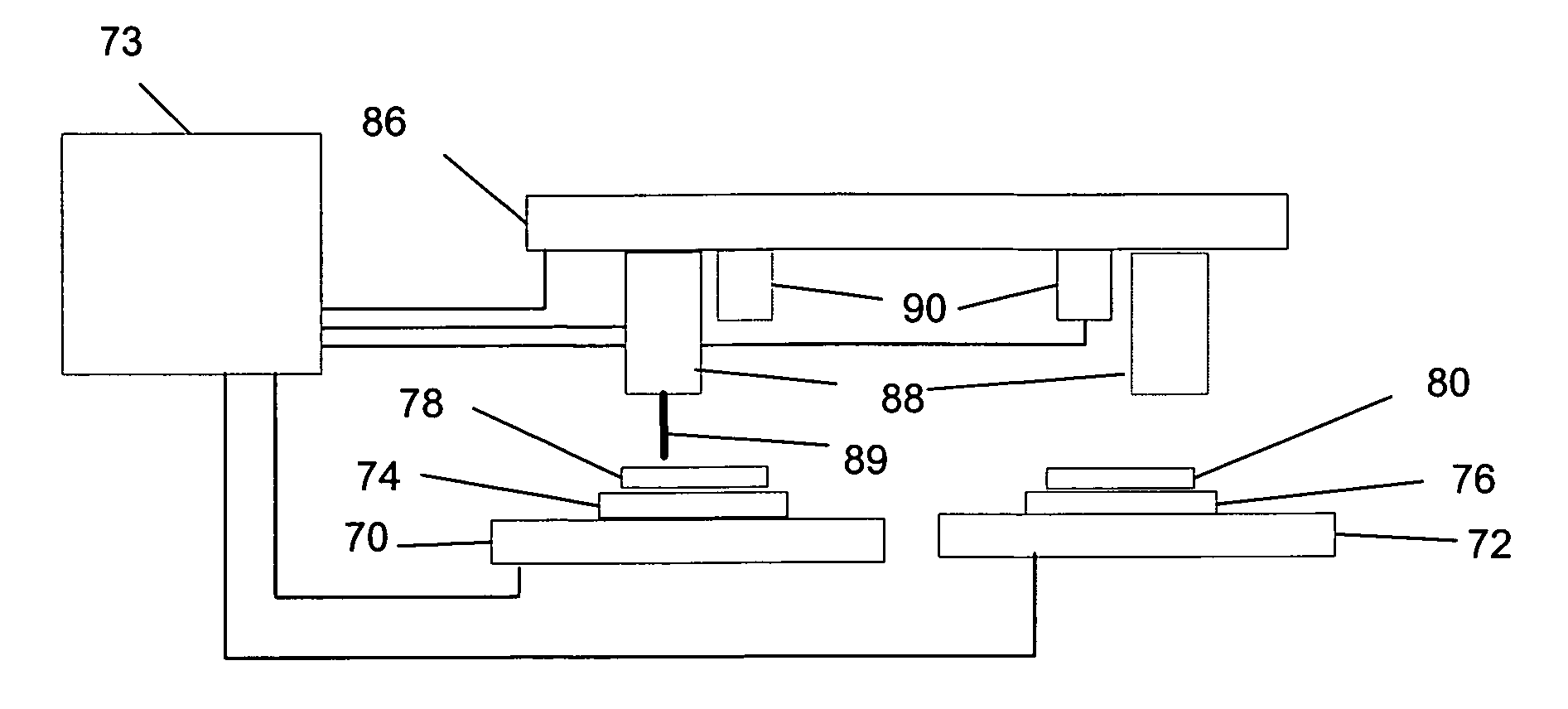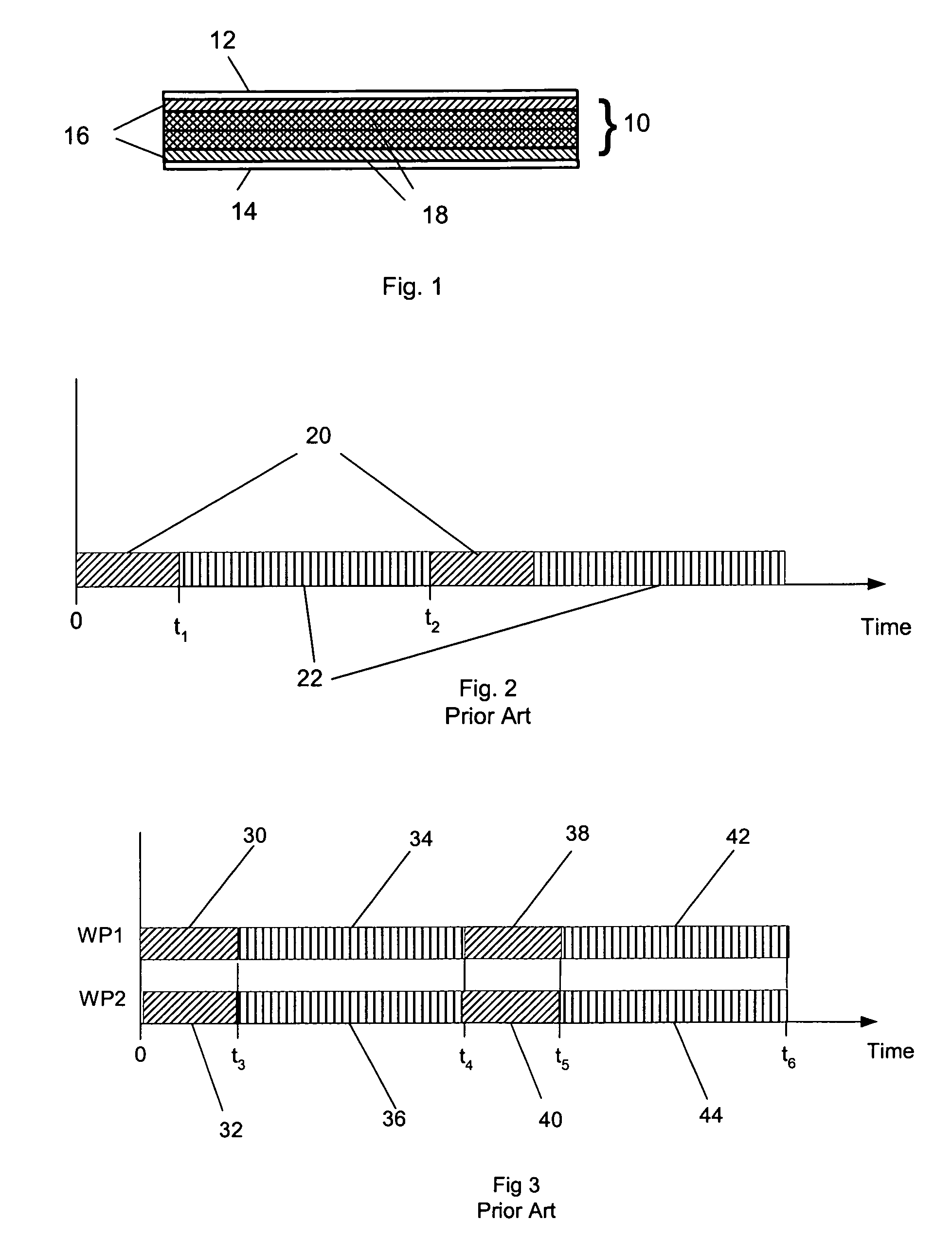Method and apparatus for laser processing
a laser processing and workpiece technology, applied in metal working equipment, manufacturing tools, welding/soldering/cutting articles, etc., can solve the problems of limiting the choice of laser processing system designers, limiting the selection of lasers, and limiting the laser removal rate of laser processing equipment, so as to improve the utilization rate of laser and optical components, the effect of improving the throughput of the apparatus employed
- Summary
- Abstract
- Description
- Claims
- Application Information
AI Technical Summary
Benefits of technology
Problems solved by technology
Method used
Image
Examples
Embodiment Construction
[0025]FIG. 5 is a simplified partial schematic diagram of a plan view of a preferred embodiment of the present invention comprising two X, Y tables 70, 72 holding two stages 74, 76 each of which can hold workpieces 78, 80, respectively. The X, Y tables 70, 72 are independently controlled by a controller 73, which may be a computer and which controls the operation of the various parts which comprise a preferred apparatus. The workpieces 78, 80 are loaded and unloaded from stages 74, 76 by load arm 82, which can move workpieces from either station to and from autoloader 84. The solid lines show load arm 82 positioned to load or unload workpiece 78 to or from stage 74 and the dotted lines show load arm 82 positioned to load or unload workpiece 80 to or from stage 76. Autoloader 84 is a device that holds multiple workpieces and, under control of controller 73 provides unprocessed workpieces to load arm 82 for transport to stages 74, 76 or accepts processed workpieces from load arm 82 fo...
PUM
| Property | Measurement | Unit |
|---|---|---|
| thicknesses | aaaaa | aaaaa |
| thicknesses | aaaaa | aaaaa |
| thicknesses | aaaaa | aaaaa |
Abstract
Description
Claims
Application Information
 Login to View More
Login to View More - R&D
- Intellectual Property
- Life Sciences
- Materials
- Tech Scout
- Unparalleled Data Quality
- Higher Quality Content
- 60% Fewer Hallucinations
Browse by: Latest US Patents, China's latest patents, Technical Efficacy Thesaurus, Application Domain, Technology Topic, Popular Technical Reports.
© 2025 PatSnap. All rights reserved.Legal|Privacy policy|Modern Slavery Act Transparency Statement|Sitemap|About US| Contact US: help@patsnap.com



